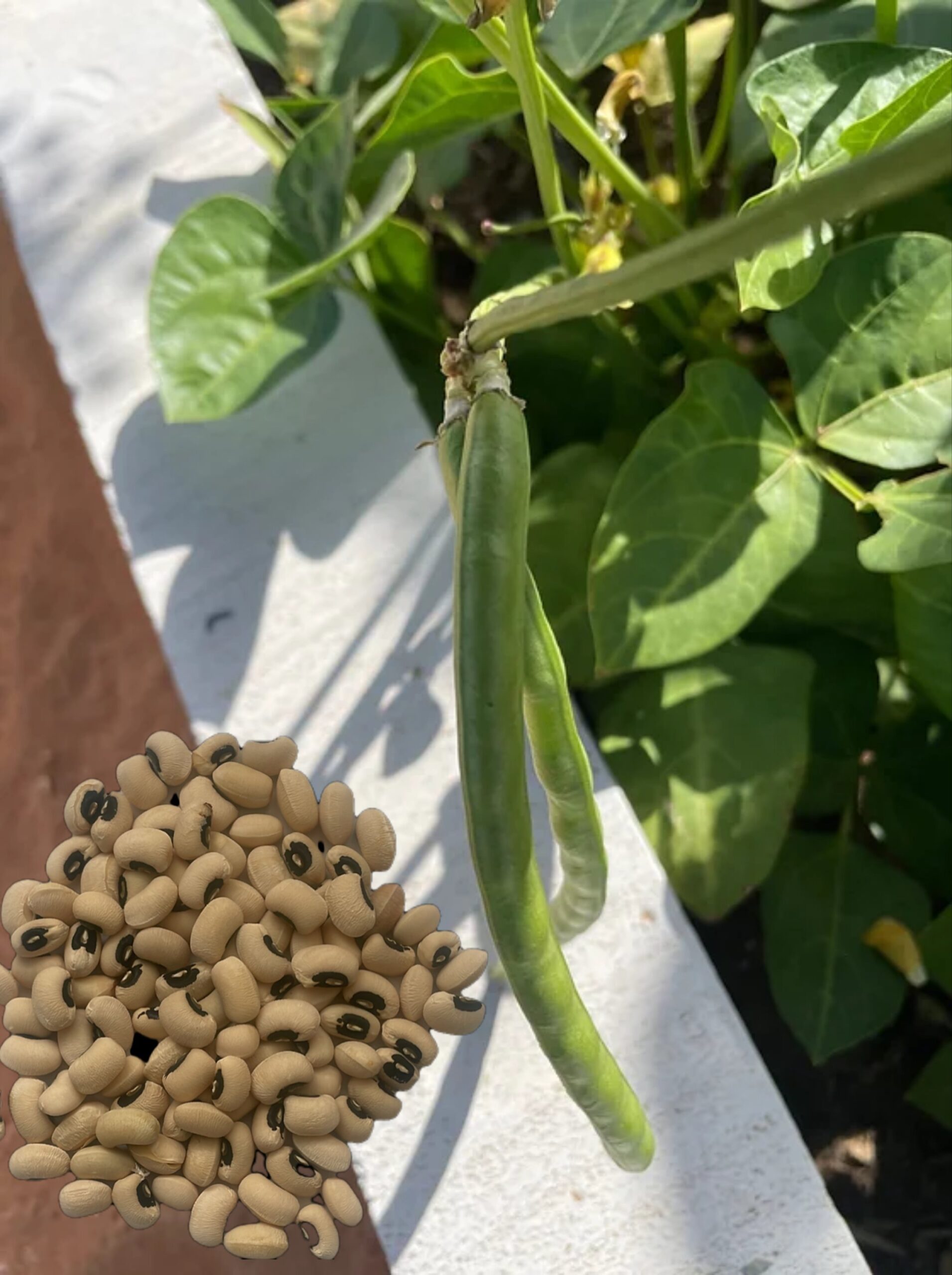Black-eyed cowpea (Vigna unguiculata) is a variety of cowpea, a legume native to Africa. It is widely cultivated for its edible seeds and pods. Here’s a breakdown of key details:
1. Appearance:
– Seeds: Black-eyed cowpeas are known for their distinctive appearance, where the seed is typically cream-colored with a prominent black spot, resembling an “eye” near the seed’s hilum (scar).
– Pods: The pods are typically green when young and turn brown as they mature. They can contain 10-15 seeds each, though this varies.
2. Nutritional Value:
– Protein: High in protein, making it an important food source for vegetarians and those in regions where animal protein is scarce.
– Fiber: Rich in dietary fiber, which aids digestion and supports heart health.
– Vitamins and Minerals: Contains essential vitamins like folate, B-vitamins, and minerals such as iron, calcium, and potassium.
3. Culinary Uses:
– Soups and Stews: Black-eyed peas are commonly used in various dishes, such as Southern “Hoppin’ John” (a New Year’s dish in the U.S.), Indian curries, and African stews.
– Salads: The beans are often used in cold salads, where they can be combined with vegetables and dressings.
– Snacks: In some cultures, the beans are roasted or fried as snacks.
4. Agriculture and Growing Conditions:
– Climate: They grow well in warm climates and are drought-tolerant, making them suitable for regions with limited water supply.
– Soil: They prefer well-drained soils and can fix nitrogen in the soil, improving soil fertility.
– Growth Cycle: Black-eyed cowpeas are typically grown as an annual crop, reaching maturity in about 60 to 90 days.
5.Health Benefits:
– Heart Health: Due to its fiber and potassium content, black-eyed peas can help regulate blood pressure and reduce the risk of heart disease.
– **Diabetes Management**: The legumes have a low glycemic index, making them a good option for those managing blood sugar levels.
– **Digestive Health**: The high fiber content promotes regular bowel movements and supports gut health
6. Cultural Significance:
– In the U.S: Black-eyed peas are a traditional food in Southern cuisine, often eaten on New Year’s Day to symbolize good luck and prosperity.
– Africa and Asia: They are staple foods in various regions, and their drought-resistant properties make them a reliable crop in arid areas.
Black-eyed peas are an important crop for food security, especially in regions facing climate challenges, and they contribute significantly to global food systems.









Reviews
Clear filtersThere are no reviews yet.